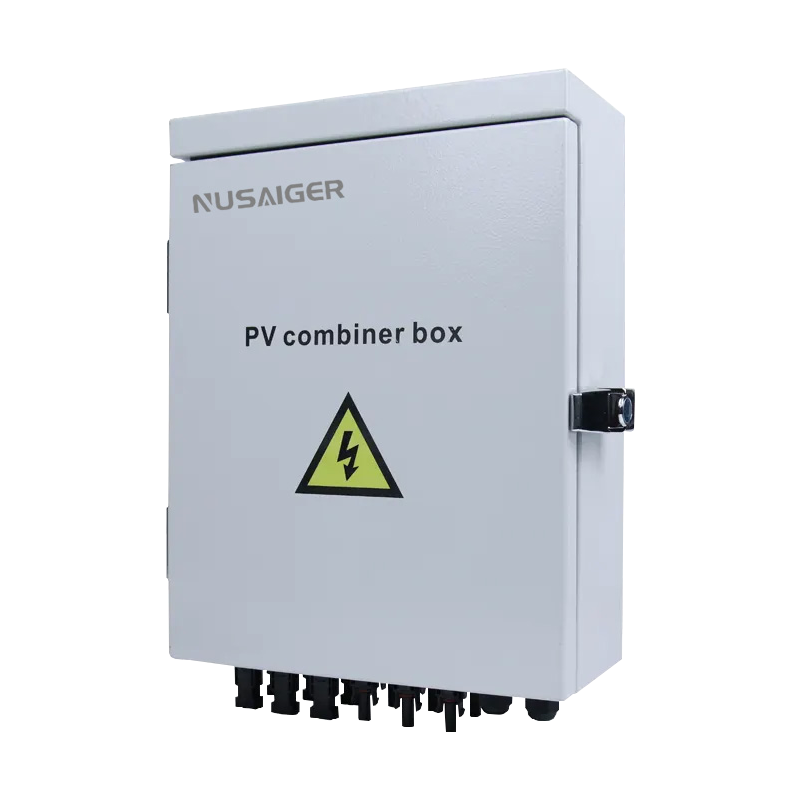Troubleshooting Common Issues in PV Combiner Boxes
The PV combiner box plays a critical role in solar photovoltaic (PV) systems by merging multiple strings of solar panels into a single output.
While designed for durability and safety, combiner boxes can experience issues over time due to environmental exposure, electrical stress, or improper installation.
This troubleshooting guide will help system owners, technicians, and installers identify, diagnose, and resolve the most common PV combiner box problems.
1. Importance of Troubleshooting PV Combiner Boxes
Proactive troubleshooting ensures:
- Continuous energy production without interruptions
- Prevention of costly component failures
- Enhanced safety for personnel and equipment
- Compliance with codes and insurance requirements
- Longer system lifespan and ROI improvement
2. Common PV Combiner Box Issues
Below are the most frequent problems found in PV combiner boxes:
- Fuse failures
- Surge Protective Device (SPD) malfunctions
- Overheating and thermal damage
- Loose or corroded wiring
- Moisture ingress or condensation
- Grounding and bonding issues
- DC disconnect failures
- Monitoring system malfunctions
3. Troubleshooting Fuse Failures
Fuses are critical for protecting PV strings from overcurrent conditions.
When a fuse blows, the associated string is disconnected, reducing system efficiency.
Symptoms
- Reduced power output from the PV system
- Open circuit voltage present but no current flow in the affected string
- Visual inspection reveals burnt or open fuse
Causes
- Overcurrent due to string mismatch
- Short circuit in panels or wiring
- Underrated fuse selection
- Fuse aging or thermal degradation
Solutions
- Replace blown fuses with properly rated PV fuses (IEC 60269-6 compliant)
- Check panel string voltage/current ratings before fuse replacement
- Inspect wiring for short circuits or damaged insulation
- Upgrade to higher quality fuses if recurring failures occur
4. Troubleshooting SPD (Surge Protective Device) Malfunctions
SPDs protect PV systems from lightning strikes and transient surges.
Failed SPDs leave the system vulnerable to catastrophic damage.
Symptoms
- Indicator window on SPD shows “Red” instead of “Green”
- System alarms from monitoring device
- No visible surge protection response during lightning activity
Causes
- Lightning strike exceeding SPD capacity
- SPD aging from repeated surges
- Incorrect SPD type installed (Type 1, Type 2, or Type 3 mismatch)
Solutions
- Replace SPD modules showing failure indication
- Verify SPD rating matches PV system voltage
- Install Type 1+2 SPDs in lightning-prone regions
- Ensure proper grounding for surge dissipation
5. Overheating and Thermal Damage
Excessive heat is a common issue in PV combiner boxes exposed to direct sunlight and high current loads.
Symptoms
- Melted insulation or burnt smell
- Discoloration of terminals or breakers
- Frequent tripping of protective devices
Causes
- Loose wiring connections increasing resistance
- Undersized conductors carrying excessive current
- Inadequate ventilation inside the enclosure
Solutions
- Tighten all wiring terminations to manufacturer torque specs
- Use correct conductor sizing per NEC/IEC requirements
- Consider shaded or ventilated installation locations
- Upgrade enclosure to higher NEMA/IP rating with heat dissipation
6. Wiring and Connection Faults
Loose, corroded, or damaged wires are among the top causes of PV combiner box failure.
Symptoms
- Intermittent power output
- Increased resistance readings on continuity tests
- Visible corrosion or discoloration on terminals
Solutions
- Re-strip and reconnect corroded wires
- Use anti-oxidation paste on aluminum conductors
- Apply proper crimping tools for lugs and terminals
- Schedule periodic maintenance inspections
7. Moisture Ingress and Condensation
Despite IP/NEMA ratings, poor sealing or harsh climates may allow moisture into the enclosure.
Symptoms
- Water droplets inside the enclosure
- Rust formation on metallic components
- Frequent short circuits or insulation failure
Solutions
- Replace damaged door seals or gaskets
- Use desiccant packs to absorb humidity
- Install enclosure heaters in cold climates to prevent condensation
- Upgrade to stainless steel or UV-resistant plastic enclosures
8. Grounding and Bonding Issues
Improper grounding can cause electrical hazards and invalidate insurance or warranties.
Symptoms
- Unexpected voltage on grounded parts
- Ground fault alarms from inverters
- Corrosion at grounding points
Solutions
- Verify all ground connections are secure and low resistance
- Apply anti-corrosion compounds on ground lugs
- Follow NEC 690 and IEC grounding guidelines
9. DC Disconnect Switch Failures
The disconnect switch allows safe isolation of the PV system during maintenance. Failure can result in unsafe servicing.
Symptoms
- Switch stuck in ON/OFF position
- Arcing when operating the switch
- Inability to fully isolate the system
Solutions
- Replace faulty disconnect switch with NEC/IEC-rated models
- Perform regular operational testing
- Avoid switching under load if not rated for it
10. Monitoring System Malfunctions
Modern PV combiner boxes often include monitoring electronics. Failures can lead to blind spots in system performance tracking.
Symptoms
- No communication with SCADA or monitoring software
- Incorrect current/voltage readings
- Alarm notifications not received
Solutions
- Check data cables and communication modules
- Update firmware for monitoring devices
- Replace faulty sensors or modules
11. Preventive Maintenance Tips
Many issues can be avoided with scheduled preventive maintenance:
- Quarterly inspection of fuses, SPDs, and breakers
- Torque testing for all connections
- Thermal imaging to detect overheating hotspots
- IP/NEMA seal inspection for cracks or wear
- Ground resistance testing annually
12. Case Study: 1MW Rooftop PV System
A rooftop solar system in California experienced frequent fuse failures.
After troubleshooting, it was discovered that mismatched string lengths caused imbalanced currents, leading to recurring overcurrent.
By reconfiguring string layouts and replacing underrated fuses, failures were eliminated, restoring full system performance.
Conclusion
PV combiner box issues, if left unchecked, can significantly reduce energy yield and compromise safety.
By understanding the most common problems—such as fuse failures, SPD malfunctions, overheating, and wiring faults—technicians and owners can implement effective troubleshooting measures.
Regular maintenance and compliance with NEC/IEC standards ensure long-lasting, safe, and efficient PV system operation.



